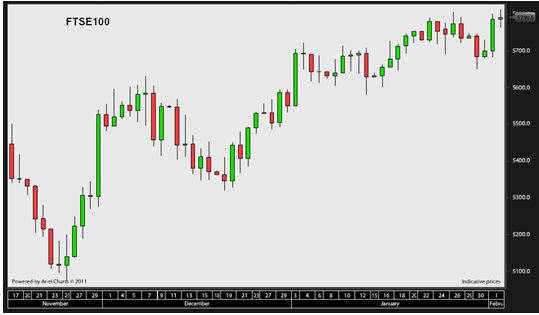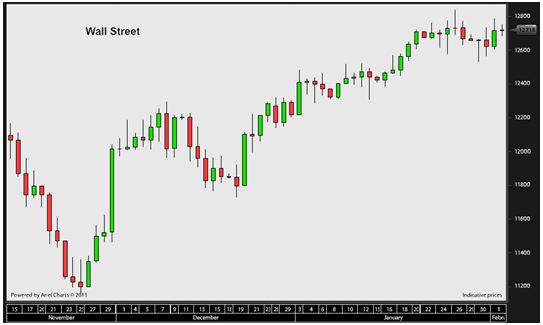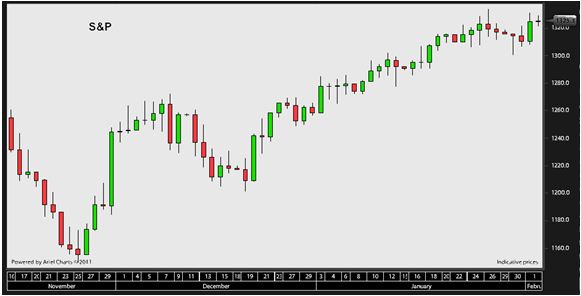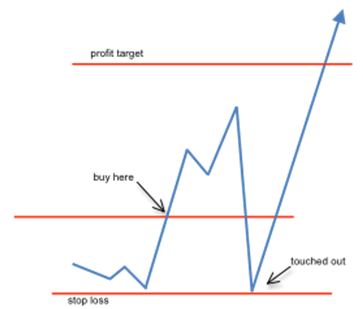 With January out of the way, we might now see the markets begin to show their true colours.
With January out of the way, we might now see the markets begin to show their true colours.
There’s no denying that they’re looking bullish, with the FTSE, Dow and S&P all showing clear uptrends since November last year …



What to do about whipsaw trades
Now, earlier this week I was listening to a trader bemoaning the fact that he’d been subjected to yet another whipsaw trade.
We’ve all been there… we’re waiting patiently for confirmation of our signal, only for the price to turn around as soon as we place our trade, move directly to our stop-loss level, and then turn again in the direction we’d traded in.
Something like this…

So, just as we’re counting our losses – the price is probably moving through our original profit target.
… And we’ve all had that feeling that the world (or our broker) is conspiring against us.
The truth, however, is that if you thought that was a good place for a stop loss – chances are that a few other people did too, which gave that level a natural resistance.
The solution? Well, the major temptation is to widen your stop. If I’m getting whipsawed out, my stop loss must be too tight, right?
Not necessarily. As long as your stop is not sitting on the wrong side of an obvious level of support or resistance, or on a big round number, or isn’t way too tight for the kind of profit target you’re after, chances are that the problem isn’t with your stop level.
Why a whipsaw is good news
Yes, you did read that right.
Your whipsaw trades could be telling you that you’re positioning your stop losses at just the right level.
Consider these two different scenarios…
1. The stop loss levels on your trades are hardly ever hit. Is this telling you that you’re a great trader? Or is it telling you that your stop loss is probably too wide?
2. Your stop loss is frequently being smashed through. Is this telling you that it’s too tight?
So, if your stop loss is just getting touched by a whipsaw trade, this is telling you that it’s at the right level.
Human nature means that you simply don’t remember all the times that it almost got touched out but didn’t; whereas the times it just got touched seemed to be burned onto your memory!
The whipsaw trade isn’t telling you that you’ve got it wrong – in fact, it’s telling you that you’re managing your risk on the trade about right.
Keeping losses annoying instead of devastating
If you’re concerned about your trading strategy, you’d be better off looking at your success rate and your risk-reward ratio. If these two figures aren’t showing you to be profitable, then it could be that your trade entry or exit parameters aren’t quite right.
But suffering from whipsaw trades doesn’t in itself mean there’s anything wrong with your strategy.
And simply widening stops because you don’t like your whipsaws is not the answer. This means increasing your risk, and increasing your chances of a big drawdown. Whipsaw trades are minor annoyances – like having to fork out for the insurance premium on your car. You don’t like it, but the benefits outweigh the potential downside.
In trading, we have to accept that we’re going to be wrong. And the more we trade, the more times we’ll be wrong.
What’s important is that we keep those losses to minor annoyances – and don’t let them become big drawdowns.
So, every time you get knocked out by a whipsaw, console yourself that you’ve got a great risk-control tool in action.
